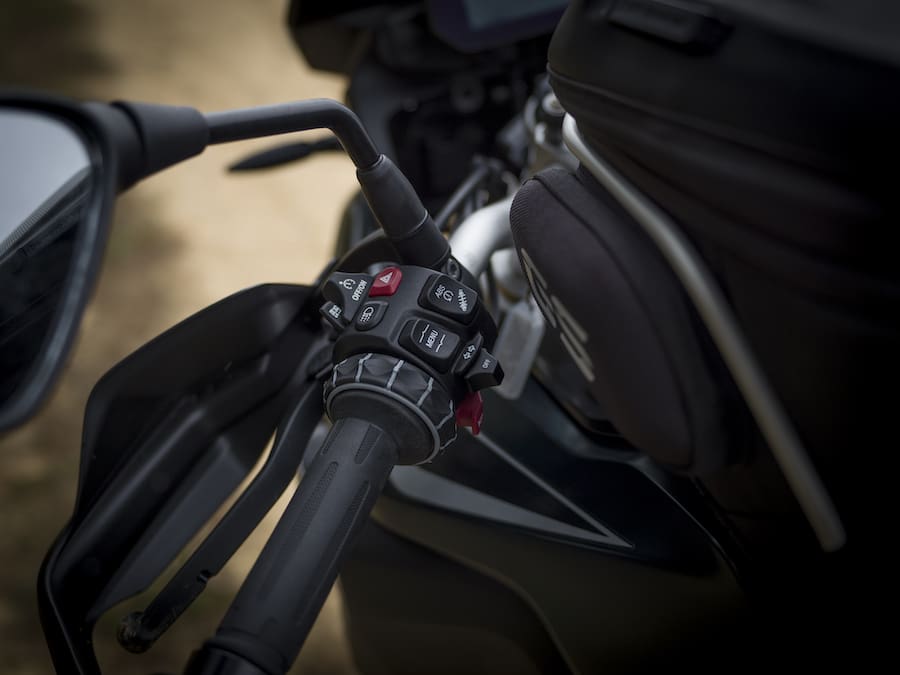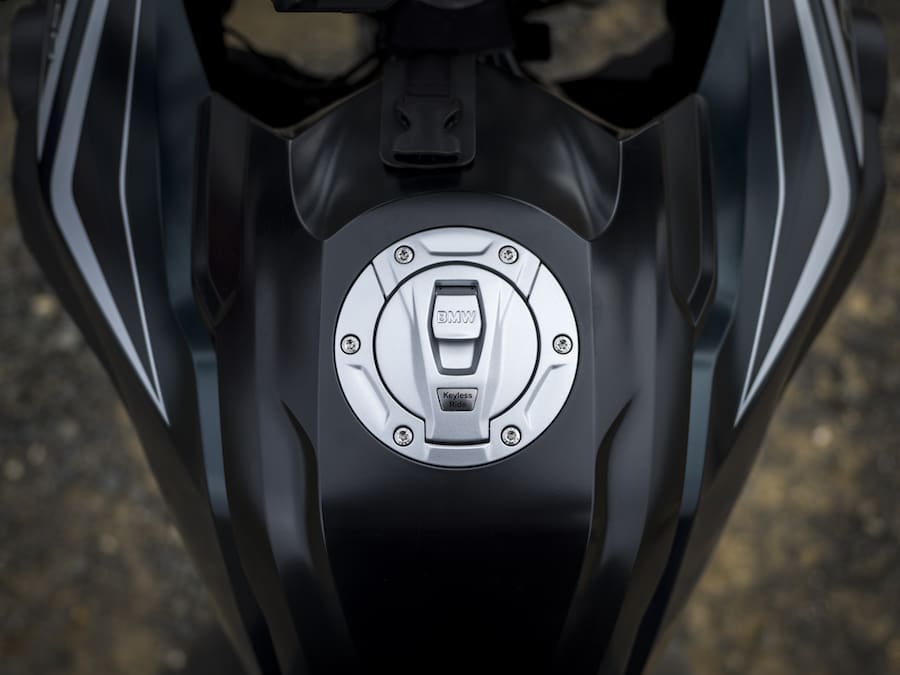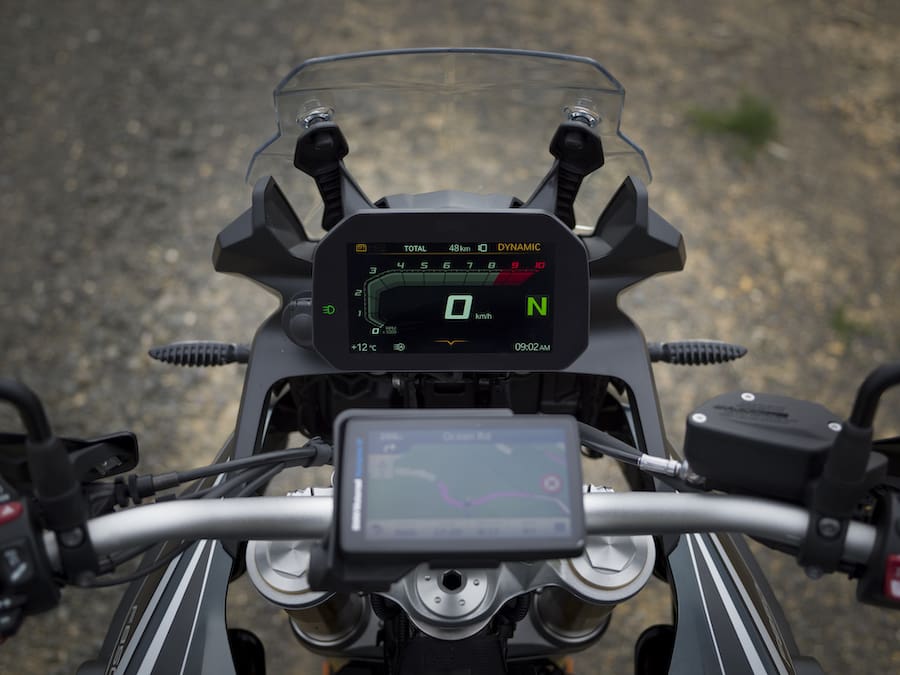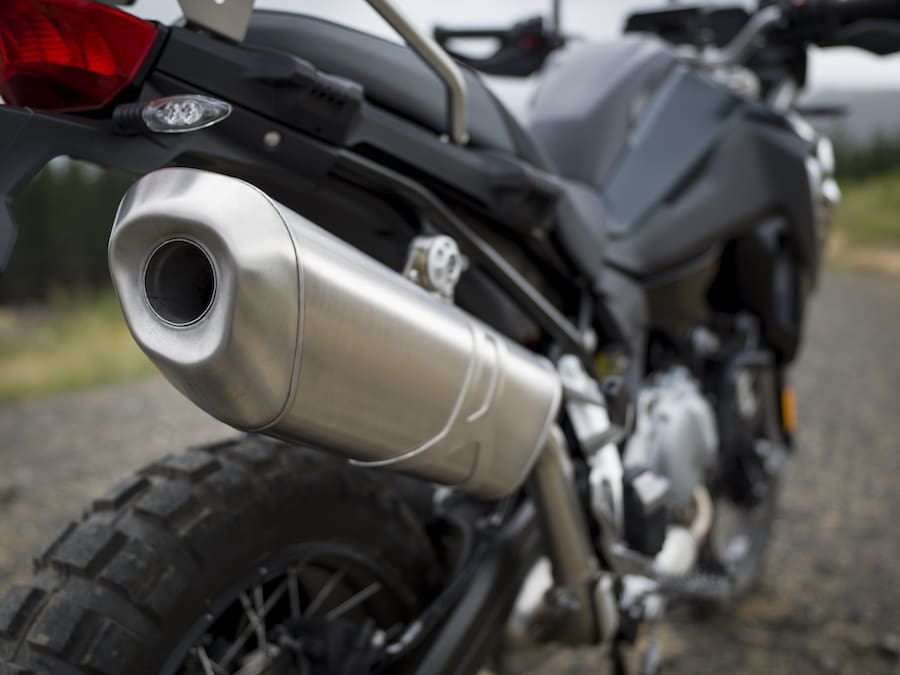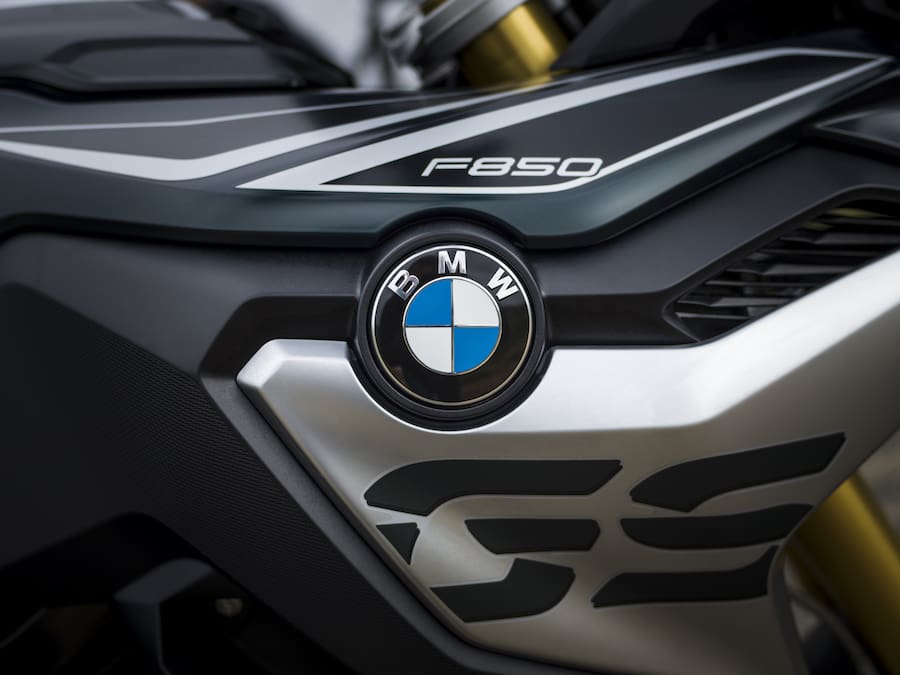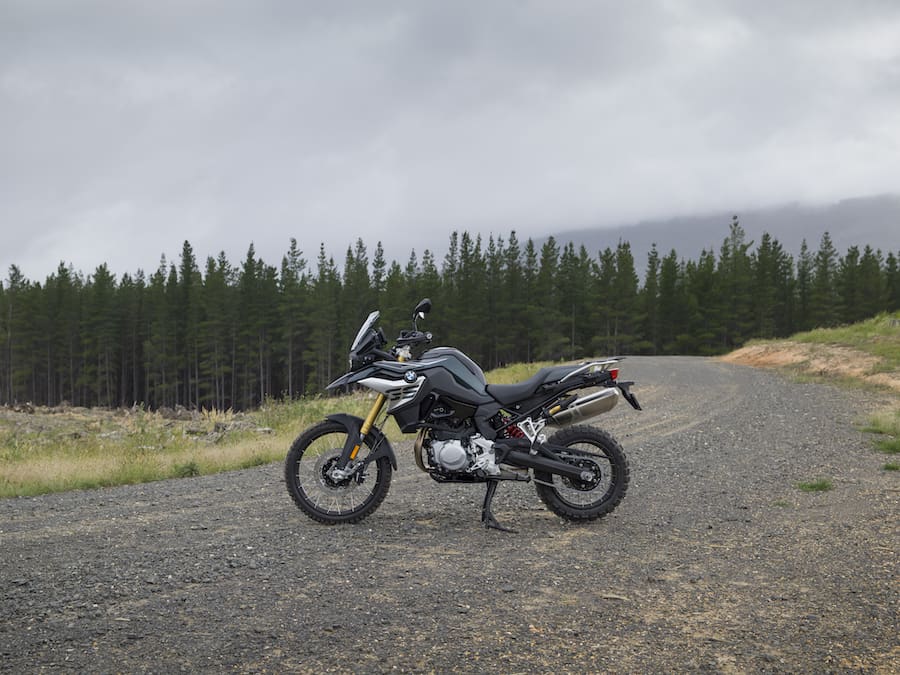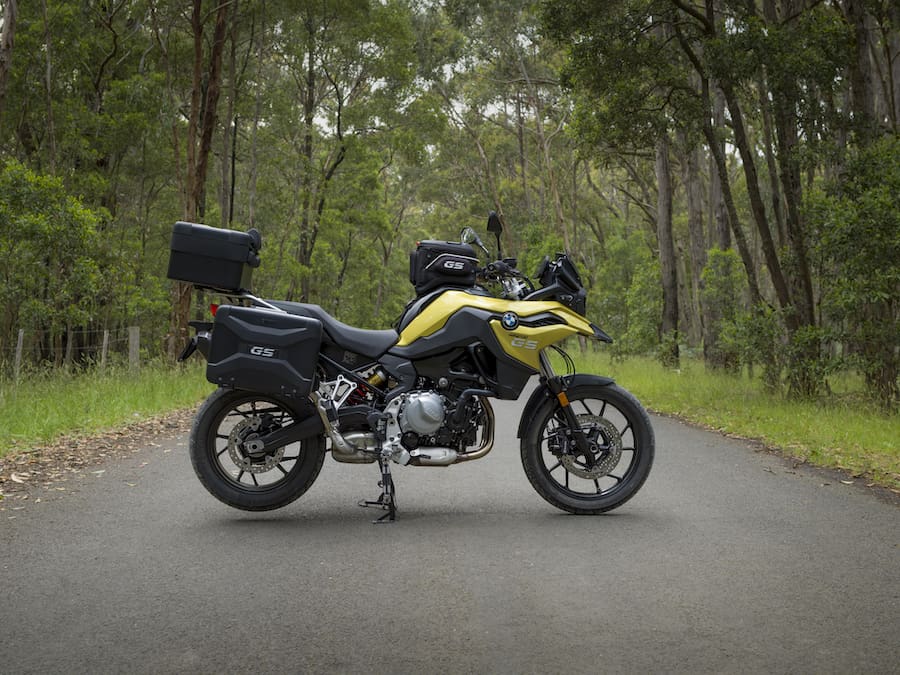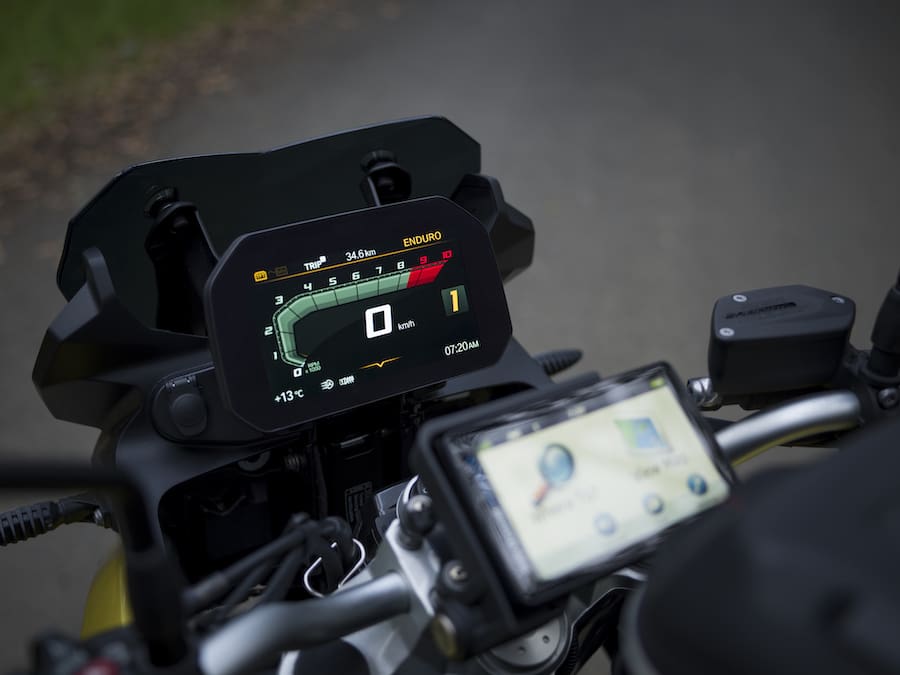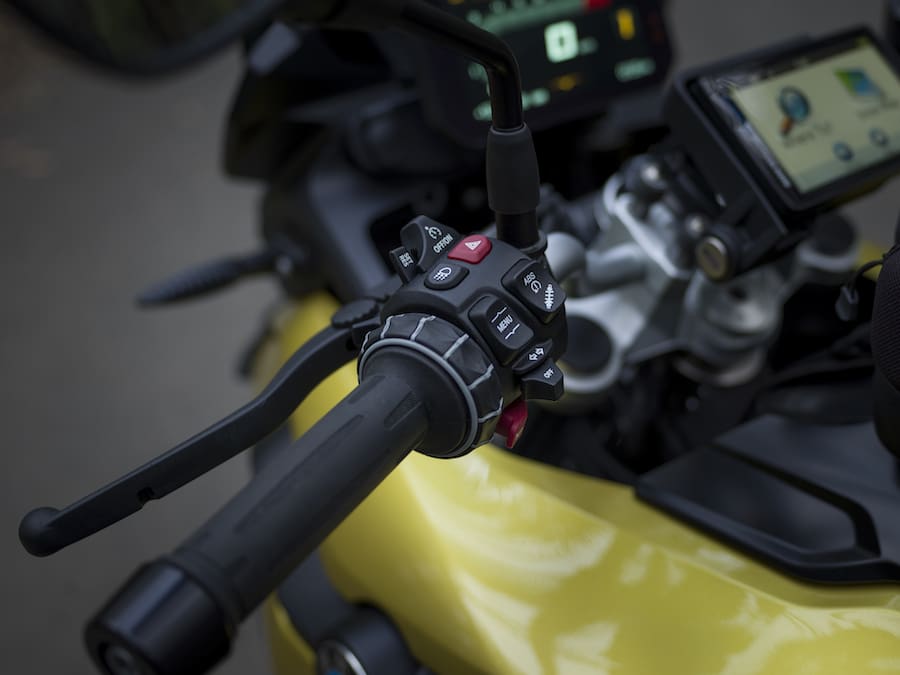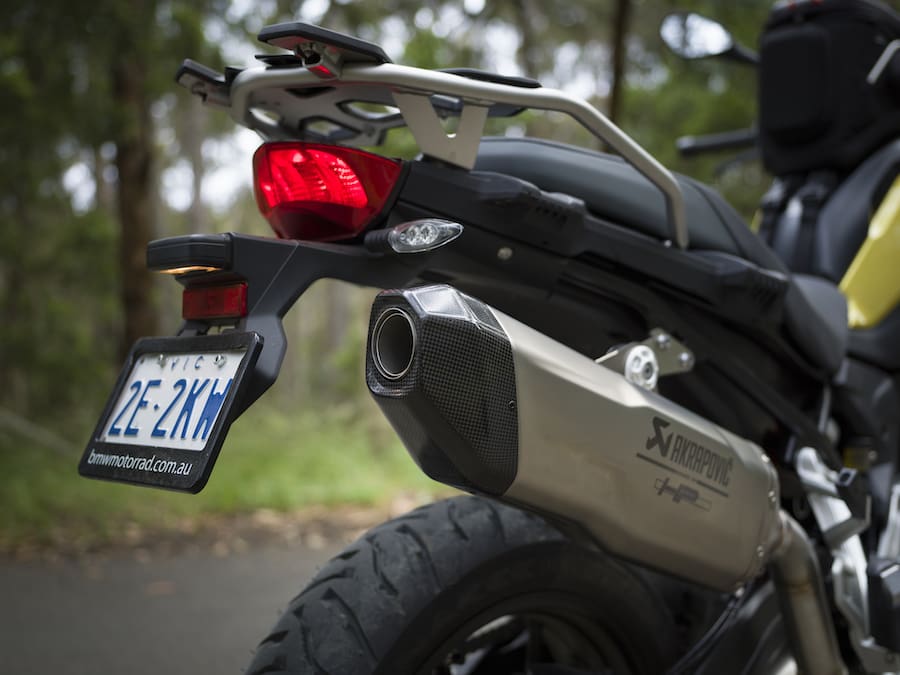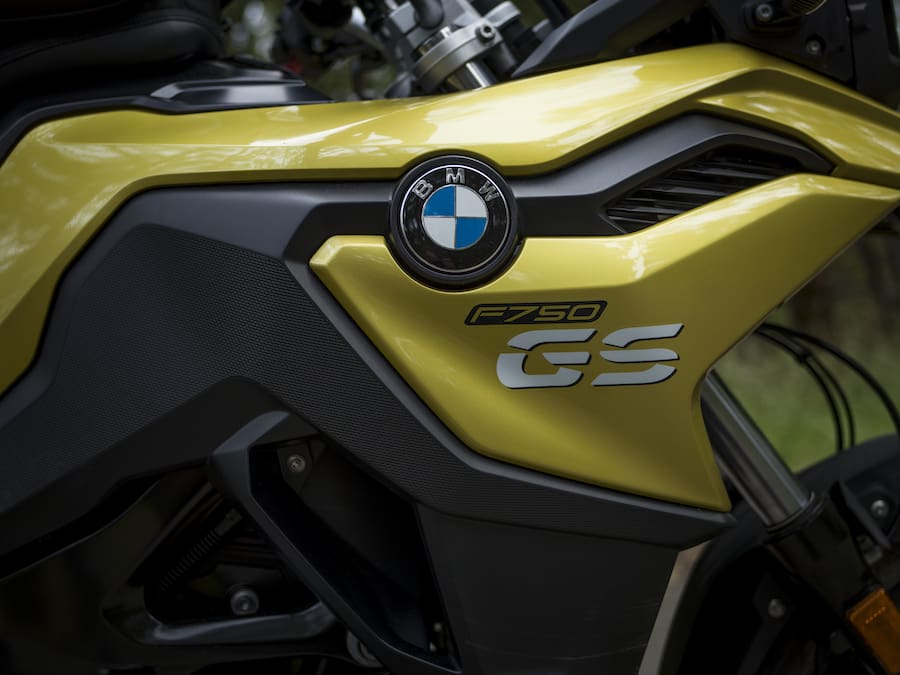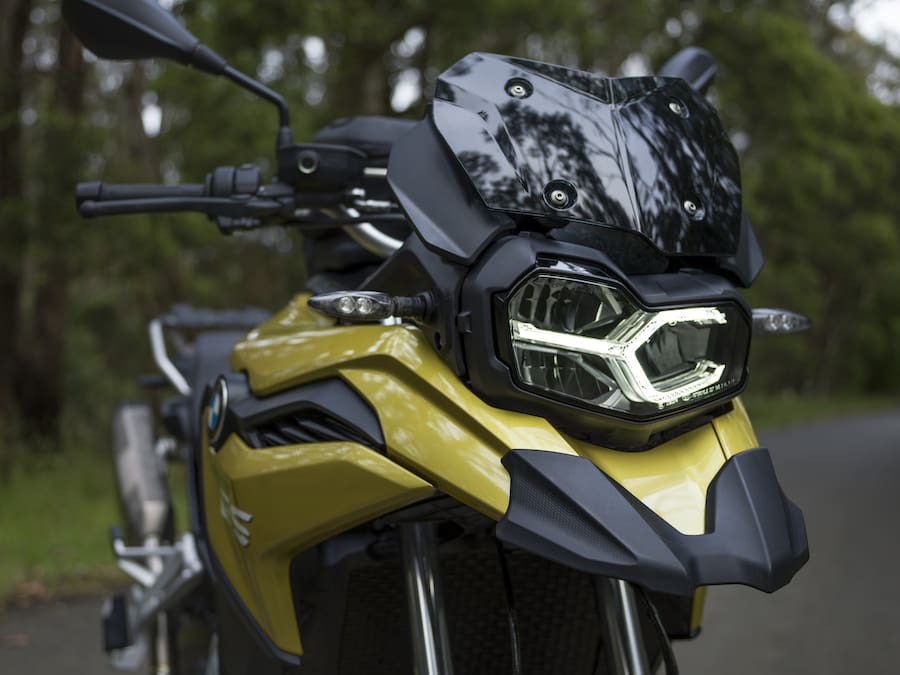BMW’s GS range is a legendary pedigree of machine that’s been to the far reaches of the globe and often beyond. I’ve seen a GS variant in all of the 29 countries I’ve ridden a bike in so far and I wouldn’t be surprised if BMW was sending one for the first astronauts on Mars to ride. The competent and hugely popular and BMW’s latest GS offerings in the F 850 GS and the F 750 GS have sharpened the pointy end of the competitive and lucrative adventure segment yet again.
Two very different machines, both powered by the same 853cc parallel-twin engine yet separated by 100cc in their title only (no, I don’t know why). By BMW’s own admission, they have appealed to either side of the GS enthusiast market; a fully fledged off-road adventure tourer with the 850 and the road-touring trail seeker with the 750.
A challenging route through Victoria’s Macedon Ranges just outside of Melbourne’s hustling grind provided some incredible trails and roads that would keep even the most daring thrill seeker happy. The perfect playground to punt these two new German adventurers through their paces. How each individual bike faired in the mixed conditions was rather intriguing…
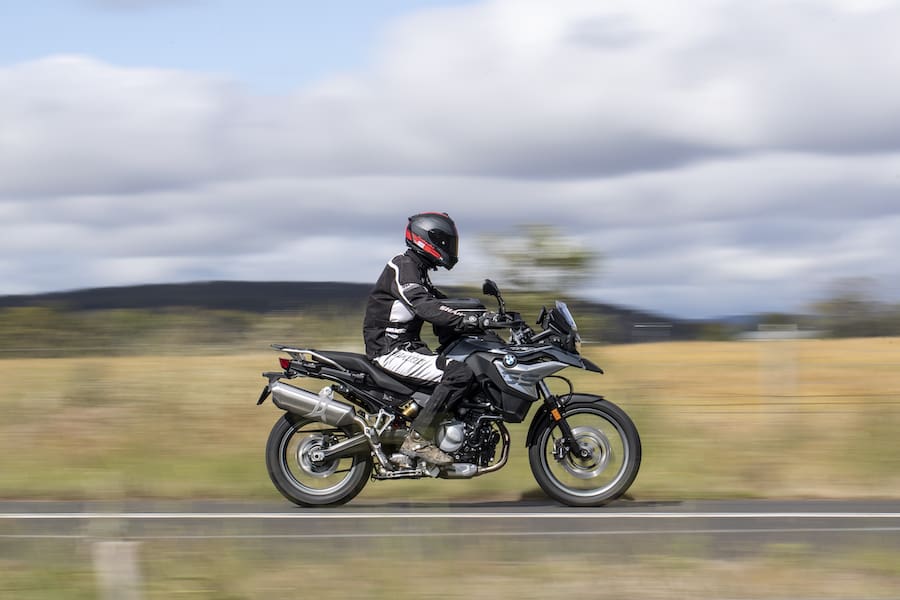
F 850 GS
BMW has gone back to the drawing board and completely redesigned the F 850 GS to give the rider a level of high-end finishes which scream German efficiency. Only minutes into the ride I felt like I had owned the bike for years. There is something about a BMW that always makes me feel at home, it’s like the bike is tailor made for the rider, everything is where it should be and nothing feels like a tack-on or gimmick. After a short cruise along the highway we hit the dirt trails and this is where the 850 truly shines.
I have spent years riding bush trails through intense scrub and loose terrain so I was really keen to find the limit of man and machine. But something didn’t add up with the 850. Because it’s so well behaved on the road, I thought this motocross bike on steroids would struggle off the beaten track. However, with the settings (easily) switched to Enduro Pro at the push of a button, the F 850 GS did exactly what it says on the tin and took it all in its stride – BMW has built a bike exactly for the task. In fact, seeing triple digits on the striking TFT high-res display while blasting through the bush on trails only just wide enough for me and my newly found all-terrain ego gave me a feeling of control I’ve never had on an adventure bike. This is down to some very well thought-out ergonomics.
At the heart of the chassis resides an 853cc parallel-twin engine with a 90-degree offset crankshaft and a 270-450-degree firing order which means the inline twin retains that calm, yet grunty feeling and sound of BMW’s signature boxer. If we’re comparing apples to apples and line it up against the older 800 GS, the new engine, apart from the obvious 50cc capacity increase produces a substantial gain in both power and torque throughout the rev range. The 850 reaches a peak torque output of 92Nm at 6200rpm and the 70kW (95hp) of peak power chimes in at a relatively low 8200rpm. It’s not going to break any land speed records, but it’s the way it makes this power and torque along with the completely customisable ergonomics that really make this package so rideable.
The other thing I’m in love with is the on-board tech. BMW includes a lot of tech from its automotive arm into its motorcycles these days and the F 850 (and the 750 for that matter) has some pretty cool inclusions. For me, staying connected is really important and when I’m not speaking with someone on my daily commute, I love listening to Spotify. The BMW integrates both of these features flawlessly and the car-style TFT display thats able to integrate with your phone is fantastic, actually, it’s brilliant. I got a call from my wife while I was ripping through the scrub somewhere between who knows where and wheel-a-barra-back, and she didn’t even know I was on a bike. All of this connectivity while I was able to easily change engine mapping and suspension settings on the fly. The dash is quite an integral part of this machine and the exceptionally well oriented buttons and handlebar-mounted turn-dial system for operating it is just as intuitive.
The planned route covered almost everything you would expect to find on a true adventure ride and it wasn’t long before the terrain claimed a few riders and their 850s bit the dust. To my surprise, the GS was particularly manageable in short-footed situations or on loose terrain. I’m sure that many prospective owners of a new 850 may not get so carried away in the bush, but I wanted to see how adventurous things could get… I gave the 850 a real nudge when it came to how well the electronics and adaptive suspension settings kept the rider shiny side up when all you can see is mud and dust with a bit of blue sky between the trees.
Particularly impressive was how free the off-road settings let me ride the bike, yet stepped up to the plate when I got a bit carried away. It was really a fight between the ABS and traction control at times keeping me off the ground and if we’re talking high-end performance, I certainly noticed distinct similarities with how the system worked comparing to some of the world-class electronics packages my BMW Superbike employed a few years back. Another great example of how BMW filters its tech down through the categories.
The 850 has ticked so many practicality and usability boxes that all it needs to do is look good. Well, in my opinion, it’s an aggressive, capable and sleek looking machine. It’s the type of bike I could commute to work on in the city wearing a suit, yet be ready at any given moment to launch it over a fallen tree should the need arise. Better yet, it clearly projects capability when it’s covered in mud to advertise to the world I’ve just been on a trip across the Sahara. Adventure style bikes might not be everyone’s cup of tea, but the combination of clever and striking design details married with appealing colour combinations and LED lighting really make this bike pop.
As we continued on our way through the bush, I started thinking about riding off into the wilderness and I was questioning just how much the 850 GS could take. Over the hill my questions were answered. A fellow journo who shall go unnamed, had ridden into one of those mud holes that look just like a puddle from the safety of dry ground but literally buried an 850 in a cesspool of low viscosity clay, right up to the handlebars! After crying with laughter and watching on with great interest, the GS fired straight up and rode out of the bog hole like a true work horse! The F 850 GS is the Toyota HiLux of two wheels.
F 750 GS
After such a stellar ride on the 850, I was excited for what was to come with the 750. The planned route was exactly what the 750 was targeted at. Three-quarters of the route on the road with a handful of unsealed roads thrown in for good measure. Immediately you can see that the 750 is a more road-oriented machine and as such came fitted with factory differences; shorter fork travel and a 19-inch front wheel as opposed to the 21-inch affair on the 850. When I first jumped aboard it, honestly it didn’t feel that different to the 850, but I discovered it to be in a class of its own after rounding just the first bend. It makes its intentions very clear and it was a delight to use, but just how much of a difference the road-oriented engine tune really make? Well, it’s not all that different to be honest. The F 750 GS is tuned for 57kW (77hp) at 7500rpm and 83Nm at 6000rpm with both peak outputs chiming in slightly earlier than on the off-roader.
The most immediate thing I noticed was the handling characteristics were well suited to country and windy rounds. Not too harsh, well balanced and the smaller front wheel made the 750 steer really well and remain predictable, even through tight and bumpy bends.
As the 750 was fitted with a smaller front wheel and more road-orientated tyres, I was interested to see how well it performed on changing surfaces and, while it was noticeable that the tyres and suspension setup were more touring oriented, the rider aids certainly did as they were intended. I felt the same levels of control and stability from both the traction control and ABS systems as I did with the 850, which meant you could easily stray from the main roads and go exploring. In fact along with the smaller front wheel and different suspension settings, the 750 has a shorter front fork and shock travel which reduces the overall seat height, making it perfect for those who don’t venture onto a loose surface all that often.
As well as sharing similar technology, the 750 has also been blessed with good-looking genes. With a very similar and striking appearance as the 850. Again, the daytime riding lights and sharp lines give this bike a very high-end and modern look to match the white and blue BMW logo. With so many options for styling and colour, you’re never going to be the rider rocking up at the local in the same outfit as someone else.
Even though the 850 would be hard to eclipse, the 750 really fills a spot where the 850 wasn’t designed to shine as brightly. Once again it’s not a rocket ship, nor is it a machine that turns on a knife edge, but what it does is fill the rider with plenty of confidence both on and off the road. Everything once again fits in the BMW jigsaw puzzle and creates an end result that is definitely worthy of accolade. I could feel at home riding this bike anywhere and for any number of kilometres. The ergonomics have been finely tuned and the 750 creates a balance for those looking for an all-rounder.
All that tech
Looking at the technical stats, it was hard to fathom just how many options you have with the 850 and 750 variants. Both similar bikes, yet key features make them worlds apart and as such, you just can’t compare them against each other. However, knowing what the key differences are can paint a broader picture at what we have in both machines.
As I mentioned earlier both the 750 and 850 share the same engine, yet revised mapping and power give each bike different outputs and personalities. Both more than sufficient with plenty of grunt both on and off road. After spending a considerable amount of kilometres aboard both bikes, it’s clear it’s the suspension that sets the overall feelings of the bikes apart, the 850 with longer-travel suspension gives it extra ground clearance for those off-road adventures. Both the 750 and 850 featuring the option of electronic rear-shock adjustment, which can be fettled on the fly. I would have really liked to have seen the same electronic adjustability on the fork as I did feel there was a slight imbalance between the fork and shock at times on both machines.
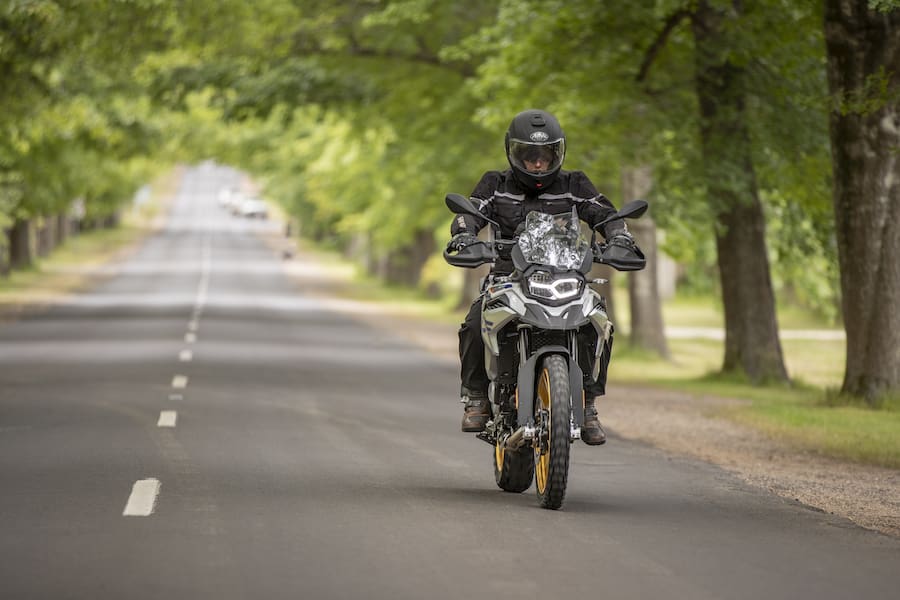
The engine mapping options are also extensive, the base models come equipped with a Road or Rain option which changes both power delivery and throttle response. You can option either bike with further modes and also a plug-in option that allows the rider to choose Enduro Pro mode. This allows the rider to have the choice of ABS and Traction control off-road but disables the ABS from the rear brake which is a big benefit when you’re really out in the sticks.
The 750 and 850 can also be optioned with the connectivity package and TFT display. Well worth it in my opinion as the display gives such a clear picture of not only what suspension and engine mapping modes you’re in, but all your vital info is efficiently displayed in bright colour with easy navigation from the handlebars. There is also a navigation package as well, which adds a dedicated GPS navigation screening cleverly links directly with the rest of the electronics package.
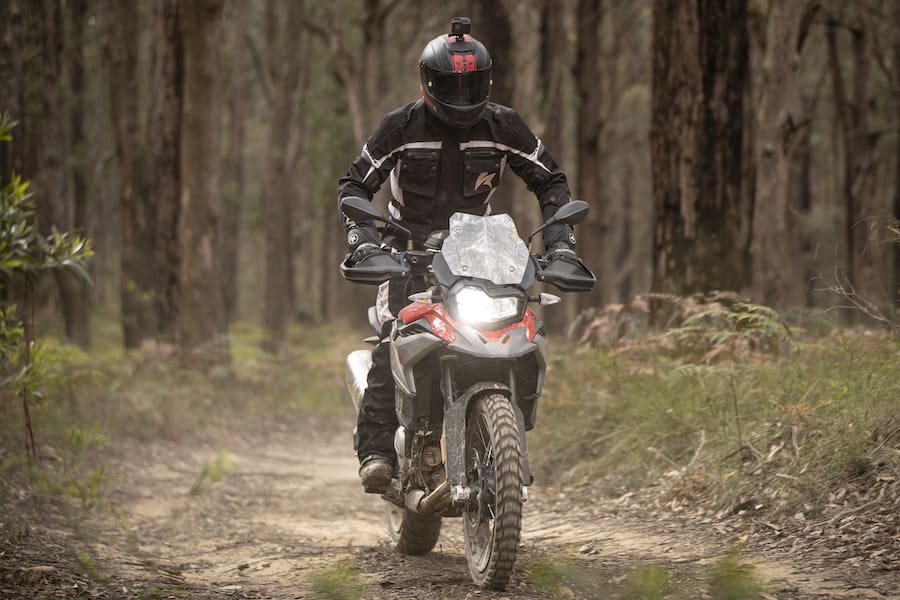
The form also offers a stack of factory fitted options including magnetic tank bags, slim-line and large-capacity panniers as well as rear-mounted dry bags, off-road footrests and if you want to sport the BMW badge on your riding gear as well, its own range of adventure suits – even a fully integrated Bluetooth-equipped helmet with surround sound.
BMW has recognised the need to fine tune critical comfort points as riders come in all shapes and sizes. Both the 750 and 850 can be optioned with different height seats, handlebars and suspension length directly from the factory which eliminates the need to source and fit any aftermarket lowering kit or modified seat.
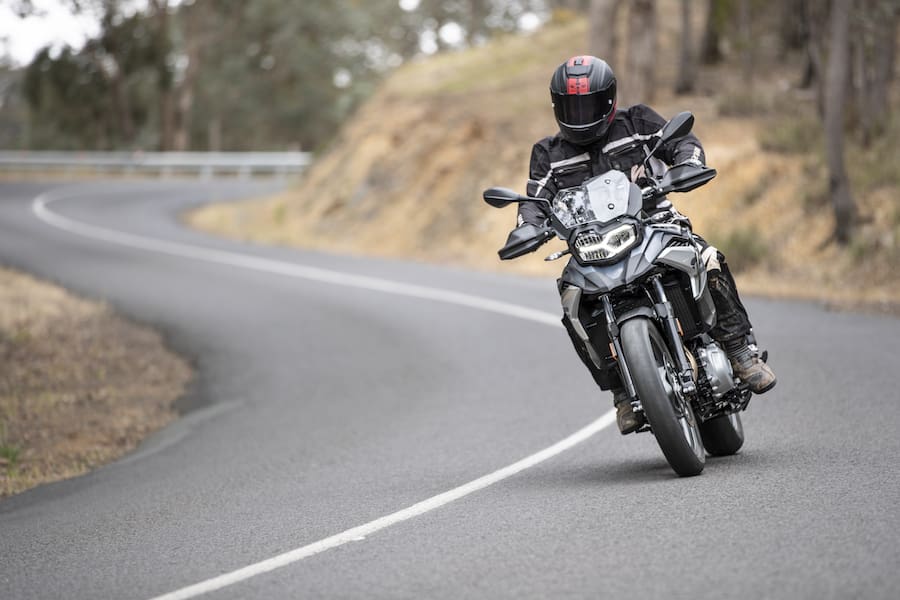
The German manufacturer has produced a package with every option covered. You have countless combinations with tech, listing them all is a job for the BMW dealer. What I can without doubt confirm is you are guaranteed to be impressed with either the 750 or the 850, depending on what your taste is.
To add further incentive BMW offer these machines at realistic prices. Ranging from $13,590 to $17,305 for the F 750 GS and $17,990 to $22,305 for the F 850 GS. No matter what option suits your budget you’re getting a lot of bike for your buck. Well-equipped stable
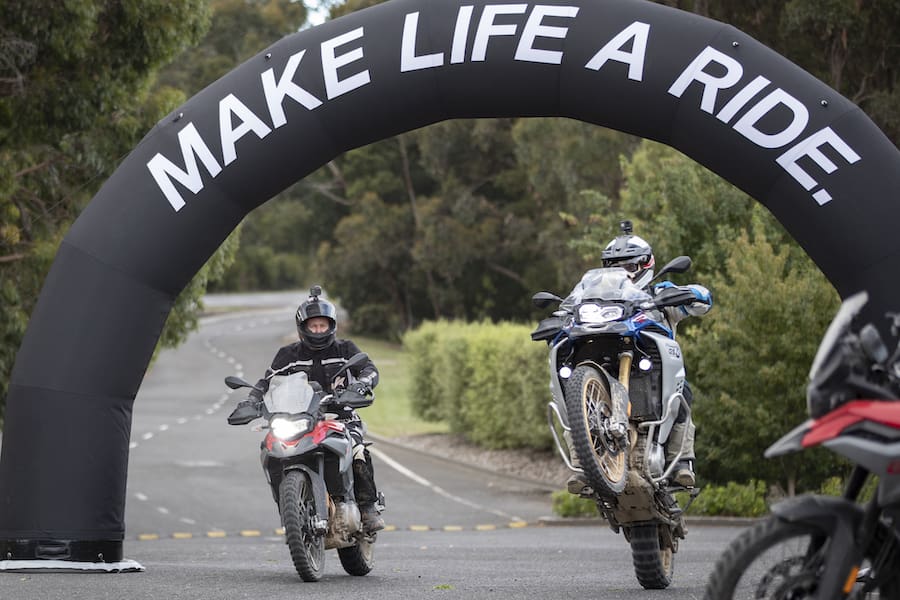
If two versions of BMW’s mid-capacity adventure bike aren’t enough, how does 11 sound?
BMW F 750 GS $13,590
BMW F 750 GS Tour $17,305
BMW F 750 GS Low Suspension $13,840
BMW F 750 GS Tour Low Suspension $17,005
BMW F 850 GS $17,990
BMW F 850 GS Rallye $18,390
BMW F 850 GS Rallye X $22,305
BMW F 850 GS Tour $21,805
BMW F 850 GS Low Suspension $18,240
BMW F 850 GS Rallye Low Suspension $18,640
BMW F 850 GS Tour Low Suspension $21,505
And if that’s still not enough, there’s two grouped packages of even more optional extras; the Comfort Package (keyless ride, navigational preparation, centrestand, dynamic ESA and a luggage grid with pannier fastenings) and the Dynamic Package (dynamic traction control, gear shift assist pro, riding modes pro, ABS pro, daytime riding light and white LED indicators).

Test Gareth Jones Photography Dean Walters
